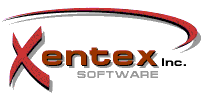|
The Development Process
How does Xentex successfully develop quality software on time and on budget?
The answer is simple - the software development process.
Regardless of project size, Xentex employs a standard software development process
to every project. Depending on specific client needs, certain aspects of the process
may need more attention than others, but the overall principles are the same.
So what is this process?
An important aspect of the software development
process is understanding that it doesn’t start with writing code.
It begins long before any programming is actually done.
|

|
|
Business Requirements Document
The first step in the software development process is to
put together a complete list of business requirements.
|
The Business Requirements Document (BRD)
covers all
basic components required in the software from a business perspective.
Xentex can assist in the process of understanding and developing a
complete Business Requirements Document.
|

|
|
Functional Specification
After completing the BRD, a fully detailed
functional specification document must be developed.
|
This functional specification
translates the requirements into a “prototype” document. This document
describes how the software will implement the required business
features. Xentex provides project management resources to author and
manage this document with regular review and input from our clients.
This step is crucial in the overall development cycle. The Functional Specification
acts as the basis for developing a full project development plan.
|

|
|
Technical Specification
The technical specification describes how this functionality will be implemented.
|
In conjunction with the functional specification
document, a technical specification document is also prepared. The
functional document describes what the specific functionality of the
software will be and how it will be presented to the user. The technical
specification describes how this functionality will be implemented. The
depth of the technical specification is greatly determined by the
complexity of the specific features.
|

|
|
Project Planning
Once these documents are complete, a detailed
project plan must be developed.
|
The project plan includes a detailed technical
implementation plan including resource allocation, a list of regular
client deliverables to measure progress, a list of any dependencies on
the client and a delivery date. Xentex uses these documents to provide
each client with a project budget.
|

|
|
Development Phase
Once project approval is received, the development
process begins.
|
As the development team begins development, quality
assurance is developing a comprehensive test plan to ensure a
well-tested product. The product manager closely monitors the
development process to ensure a quality product is being developed and
is meeting the specified deadlines. The product manager is responsible
for resolving all development issues in a timely fashion to ensure no
slippage in the delivery dates.
|

|
|
Project Management
The key to a successful project lies in the skill of its project management.
|
Xentex understands that a functional specification
is a changing document. Throughout the development cycle, the product
manager is responsible for maintaining the functional specification
document. Managing the change request process during the development
cycle is the downfall of many software development efforts. At Xentex,
our managers are trained to track change requests and develop strategies
for addressing these requests. Any possible impacts to the schedule are
clearly addressed and presented to our clients before any changes are
made. Our clients are given all options regarding each potential change
and are clearly presented the impact for each.
|

|
|
Quality Assurance
The quality assurance process is tightly integrated
with the development process.
|
Quality assurance begins with the initial
milestone and is maintained throughout the development life cycle. This
assures we provide our clients with quality products.
|

|
|
Rework
When the product is functionally complete, Xentex works through any
re-work issues that may have arisen during the development process.
|
Once the rework cycle is completed, the software is ready for managed release to
select customers. When the pre-release is complete and any outstanding
issues are resolved, the software is ready to ship. Once complete,
Xentex performs an official hand-off to the client that includes all
software and documentation.
|
591 North Avenue Suite 5, Wakefield, MA 01880 |
Tel: 781.245.4530 |
Fax: 781.246.0759
Copyright © 2002 Xentex, Inc. All Rights Reserved.

